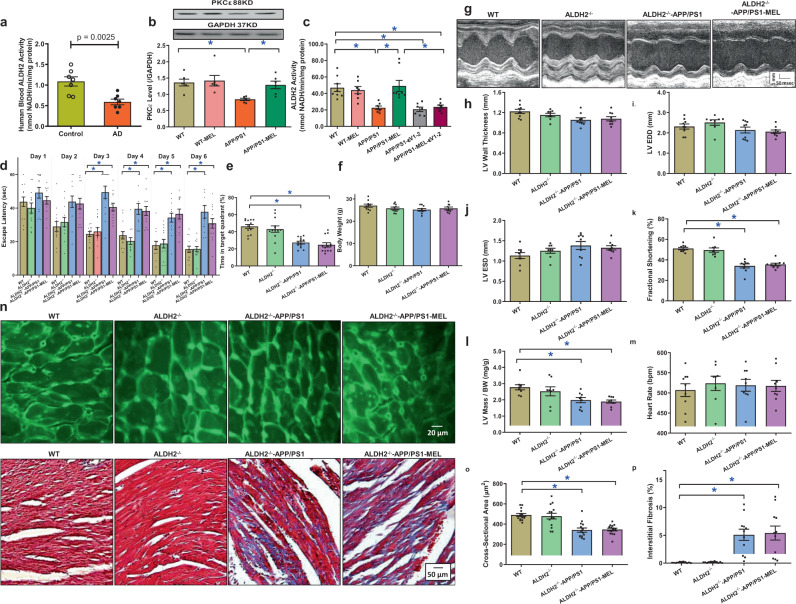Fig. 4.
ALDH2 activity and the effect of melatonin (20 mg/kg/day, p.o., 6 weeks) on ALDH2−/−-APP/PS1 mice. a Blood ALDH2 activity in Alzheimer’s disease patients and age-matched controls. b PKCε expression in WT and APP/PS1 mice treated with or without melatonin; c cardiomyocyte ALDH2 activity in WT and APP/PS1 mice treated with or without melatonin (100 μΜ) and the PKCε inhibitor εV1–2 (1 µM); d escape latency in WT, ALDH2−/−, ALDH2−/−-APP/PS1 mice, and ALDH2−/−-APP/PS1 mice treated with melatonin; e time in target quadrant; f body weight; g representative image of echocardiography; h left ventricular (LV) wall thickness; i LV end diastolic volume (LVEDD); j LV end systolic volume (LVESD); k fractional shortening; l LV mass/body weight; m heart rate; n representative images of lectin staining showing cardiomyocyte atrophy (×200) and Masson’s trichrome staining depicting fibrosis (×100); o quantitative analysis of cardiomyocyte cross-sectional area; and p quantitative analysis of fibrotic area. The data are shown as the mean ± SEM, n = 5–7 per group for a–c, n = 9–14 mice per group for d–p. *p < 0.05 between the indicated groups

